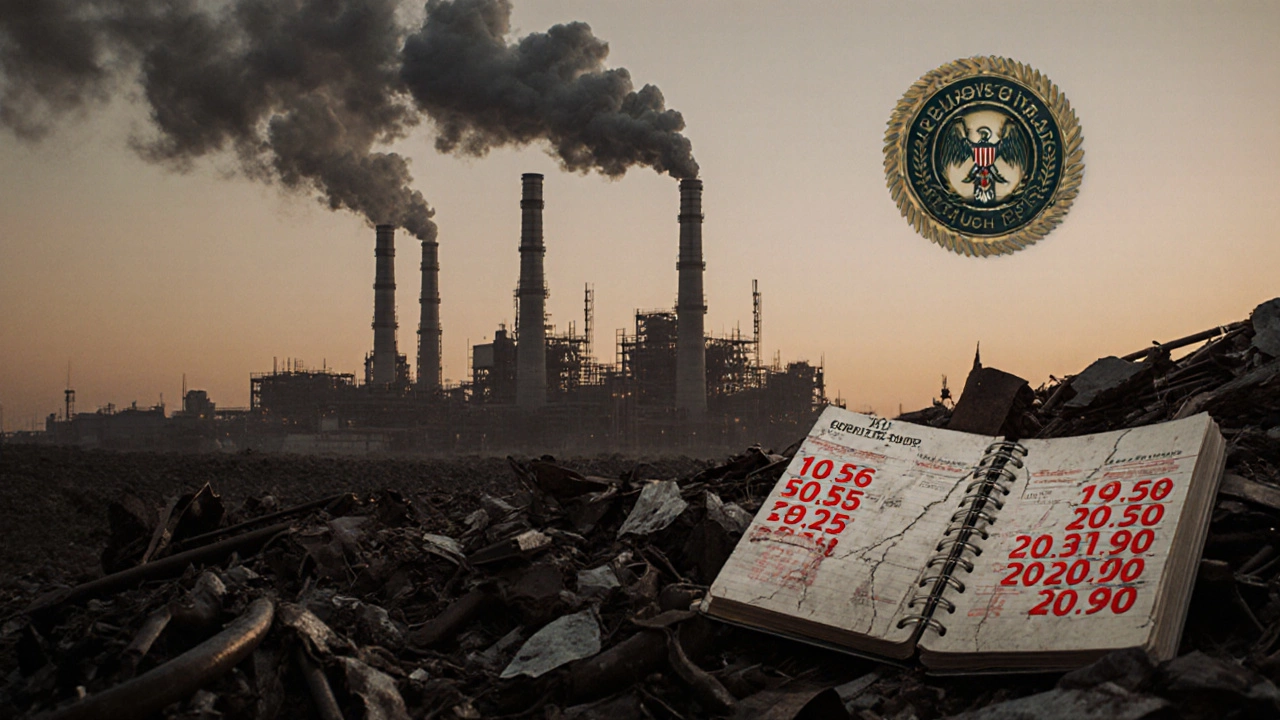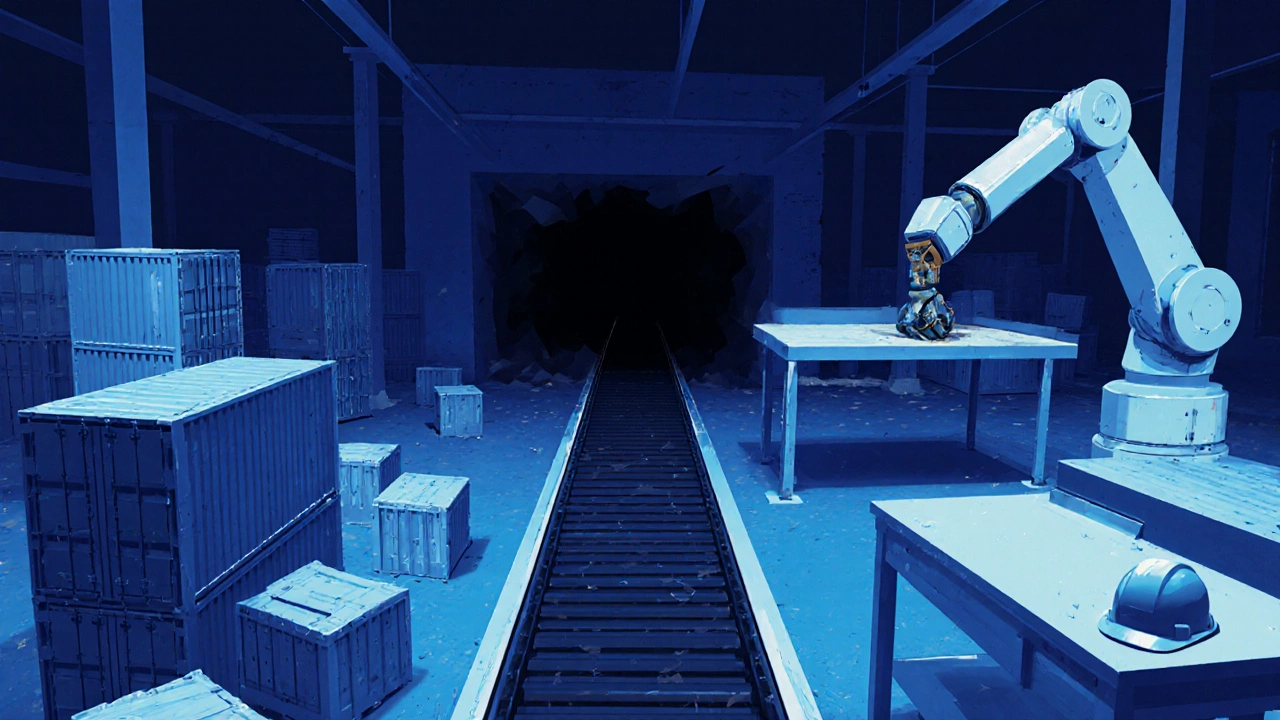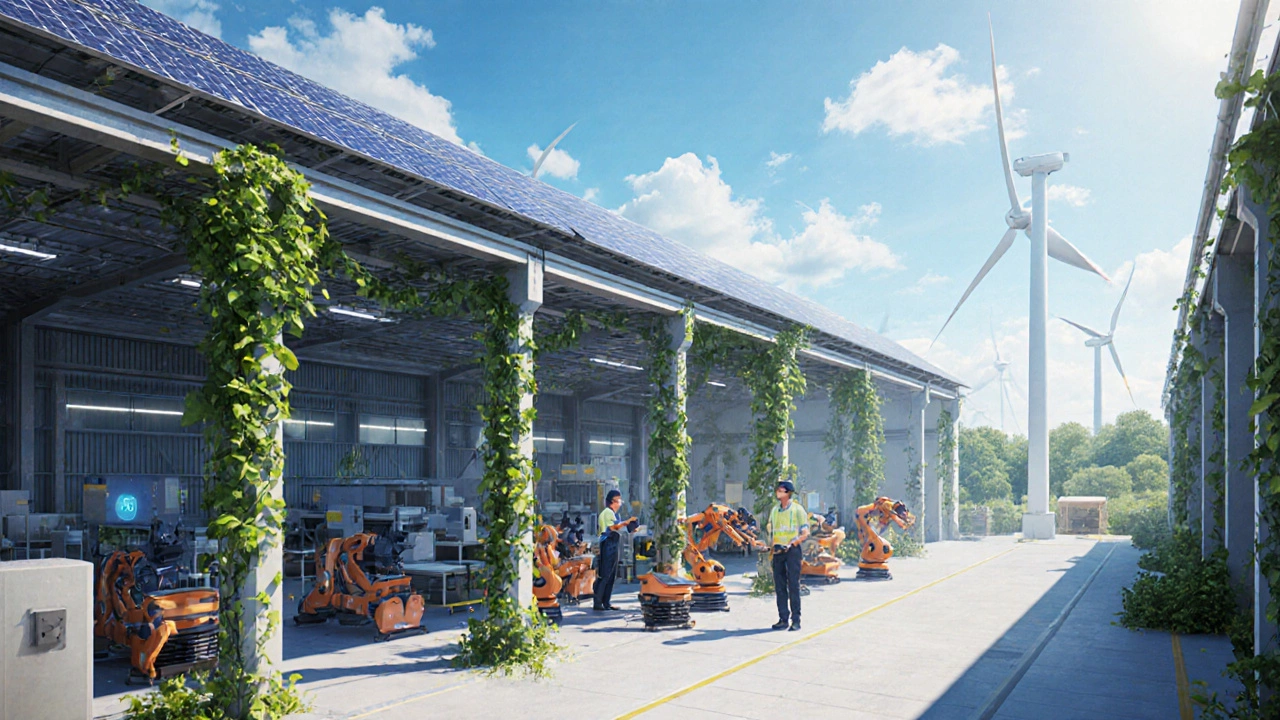
Manufacturing Cost Impact Calculator
Input Your Manufacturing Parameters
Financial Impact Analysis
Please calculate to see your manufacturing financial impact
Potential Savings from Mitigation Strategies
Please calculate to see potential savings
Key Takeaways
- Manufacturing carries heavy environmental, financial, and regulatory burdens.
- Large upfront capital and ongoing energy costs can strain cash flow.
- Supply‑chain disruptions and labor shortages add unpredictability.
- Strict compliance rules and fast‑changing technology increase operational risk.
- Proactive mitigation - such as lean practices, automation, and sustainability programs - can soften most drawbacks.
What is Manufacturing?
Manufacturing is a process that transforms raw materials into finished products for sale or use. It fuels economies, creates jobs, and drives innovation, but the flip side includes a range of hidden costs and risks that many newcomers overlook.
Environmental Impact
Environmental pollution is a by‑product of many production lines, ranging from air emissions to hazardous waste. Factories that burn fossil fuels release CO₂, nitrogen oxides, and particulate matter, contributing to climate change and health problems for nearby communities. Water‑intensive processes can deplete local sources and generate toxic runoff that harms ecosystems. In 2023, the manufacturing sector accounted for roughly 20% of global greenhouse‑gas emissions, according to the International Energy Agency.
Beyond carbon, waste management is a constant headache. Excess scrap, outdated inventory, and defective units often end up in landfills, raising disposal costs and attracting regulatory scrutiny.
High Capital Requirements
Capital investment refers to the upfront spending needed for land, buildings, machinery, and tooling. Modern production lines can cost millions of dollars, especially when precision equipment or robotics are involved. This financial barrier makes entry difficult for small firms and locks larger players into long‑term debt or equity financing.
Depreciation schedules further erode profitability, as assets lose value over time but still require maintenance and periodic upgrades.

Supply Chain Vulnerabilities
Supply‑chain disruption describes any event that interrupts the flow of raw materials, components, or finished goods. Recent events - such as the 2021 semiconductor shortage, pandemic‑related port closures, and geopolitical trade bans - have shown how a single bottleneck can halt entire production runs.
When a key supplier fails to deliver on time, manufacturers face expedited shipping costs, overtime labor, and sometimes the need to switch to more expensive alternatives.
Labor and Workforce Challenges
Labor shortage is a condition where skilled workers are scarce or demand wages beyond a company's budget. Skilled machinists, welders, and quality engineers command premium salaries, especially in regions with strong union presence or high living costs.
Turnover adds hidden costs: recruiting, training, and the loss of institutional knowledge all chip away at margins.
Regulatory and Compliance Burdens
Regulatory compliance encompasses the set of laws, standards, and inspections a plant must meet. From OSHA workplace‑safety rules to EPA emissions limits, the paperwork alone can require a dedicated compliance team.
Non‑compliance can trigger fines, production shutdowns, or costly retrofits. For example, a mid‑size chemical plant in Texas faced a $2.3million penalty in 2022 after failing to meet waste‑water discharge standards.
Market Volatility
Demand for manufactured goods can swing dramatically with macroeconomic trends, consumer preferences, or seasonal factors. A sudden dip in automotive sales, for instance, can leave excess inventory on the floor and force price cuts that squeeze profit margins.
Because manufacturing facilities have relatively fixed costs, they are less able to scale down quickly, making them vulnerable during recessions.
Technological Obsolescence
Automation, IoT, and additive manufacturing evolve at a breakneck pace. A robotic arm purchased in 2018 may lack the precision or integration capabilities of a 2024 model, yet replacing it requires another round of capital outlay.
Companies that fail to adopt newer technologies risk losing efficiency, product quality, and competitive edge.

Quality Control Complexities
Maintaining consistent product quality across large batches demands rigorous inspection, statistical process control, and often expensive testing equipment.
One defect‑related recall can tarnish brand reputation and incur legal costs. In the electronics sector, a single faulty capacitor batch in 2021 led to billions in warranty claims worldwide.
Energy Consumption and Operating Costs
Energy consumption is a major operating expense for most factories, especially those that run heavy machinery or maintain controlled environments. Electricity prices fluctuate with market conditions, and many plants rely on backup generators that add fuel costs and emissions.
High utility bills directly reduce net profit, and without energy‑efficiency measures - like waste‑heat recovery or LED lighting retrofits - costs can balloon over time.
Quick Comparison of the Major Disadvantages
| Disadvantage | Typical Impact | Common Mitigation |
|---|---|---|
| Environmental pollution | Regulatory fines, community backlash | Adopt circular‑economy practices, install scrubbers |
| High capital investment | Long ROI periods, financing risk | Leasing equipment, phased upgrades |
| Supply‑chain disruption | Production delays, excess inventory | Multi‑source strategy, safety stock buffers |
| Labor shortage | Higher wages, training costs | Invest in apprenticeship programs, automation |
| Regulatory compliance | Fines, shutdowns | Dedicated compliance team, proactive audits |
| Market volatility | Inventory write‑downs, margin squeeze | Flexible manufacturing, demand forecasting |
| Technological obsolescence | Reduced efficiency, lost market share | Modular equipment, continuous R&D investment |
| Quality control issues | Recalls, brand damage | Six‑sigma, real‑time monitoring |
| Energy consumption | Escalating operating costs | Energy audits, renewable power contracts |
How to Reduce These Disadvantages
- Implement lean manufacturing to cut waste and lower energy use.
- Invest in renewable energy or onsite generation to stabilize utility bills.
- Build a diversified supplier network and keep strategic safety stock.
- Adopt up‑skilling programs and partner with technical schools.
- Stay ahead of regulations by joining industry groups and using compliance software.
- Schedule regular technology reviews to plan timely upgrades.
- Use statistical process control and automated inspection to keep quality high.
Frequently Asked Questions
Why does manufacturing have such a large carbon footprint?
Most factories burn fossil fuels for heat and power, and many processes release CO₂, methane, or volatile organic compounds. High‑energy equipment, such as furnaces and large‑scale compressors, adds to the emissions. Shifting to renewable electricity, improving heat recovery, and optimizing process efficiency can dramatically cut the footprint.
Can small businesses survive the high capital costs?
Yes, by using lease‑to‑own financing, modular equipment, or shared‑facility models. Many entrepreneurs start with a minimum viable production line and expand as demand grows, avoiding the need for a massive upfront outlay.
How do supply‑chain disruptions affect profitability?
When a key component is delayed, manufacturers may need to pay premium freight, run overtime, or even halt production. All these increase costs while revenue stays flat, squeezing margins. A resilient supply‑chain strategy-like dual sourcing and buffer inventory-helps protect profit levels.
What role does automation play in reducing labor challenges?
Automation can take over repetitive or hazardous tasks, lowering the need for scarce skilled labor. It also improves consistency and reduces human error. However, it requires upfront investment and ongoing maintenance, so the cost‑benefit balance should be evaluated case by case.
Are there any tax incentives for greener manufacturing?
Many governments offer credits for energy‑efficiency upgrades, renewable‑energy installations, or waste‑reduction projects. For example, the U.S. Section179D deduction lets businesses write off up to $1.8million for qualifying energy‑saving improvements.
Understanding the downsides of manufacturing disadvantages equips you to plan smarter, invest wisely, and build a resilient operation that can weather economic, environmental, and technological storms.